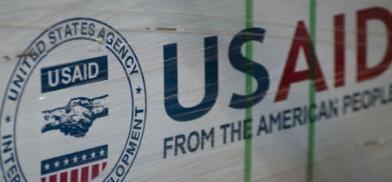Geopolitics on Kathmandu's high streets: USAID logo in local protest sparks controversy
The use of the USAID logo in a civic protest seeking disabled-friendly roads in Kathmandu, Nepal's capital, sparked controversy last week, with some alleging “suspected involvement” of the United States in fueling the protests

The use of the USAID logo in a civic protest seeking disabled-friendly roads in Kathmandu, Nepal's capital, sparked controversy last week, with some alleging “suspected involvement” of the United States in fueling the protests. The aid agency, however, denied its involvement.
Last week, around a hundred people carrying banners and posters had organized a protest march in the capital, demanding a section of the Kathmandu Ring Road—which is being widened by a Chinese firm—be made disabled-friendly, reported The Kathmandu Post. However, one of the banners that drew much attention had the logo of USAID, an aid agency of the US State Department.
Sandwiched between the two regional powers India and China, Nepalese are sensitives to geopolitical rivalries, which often play out in open in the country’s domestic politics, especially since the country became a federal democratic republic a few years ago. Besides two of Nepal's immediate neighbors, the United States also provides significant aid and development assistance to Nepal.
Objecting to the USAID logo presence in the protest, former finance secretary Rameshore Khanal wrote on Twitter, “USAID funding for Manav Matri Chakrapath (People friendly ring road), Hell!”. In another tweet, he said, “Foreign grants, loan monies should never finance local (recipient country) protests of any type. Period!”
As the controversy grew over the suspected foreign involvement, the USAID issued a statement, denying its role in the protest.
“USAID/Nepal did not in any way initiate the organization of a civil protest in Kathmandu today. We are aware that USAID's logo was inappropriately used in the banners for this event and we are looking into the matter closely,” the aid agency said in a tweet.
Interestingly, some people on social media downplayed the controversy, arguing that the cause should matter more important than who was funding the protest.
Moreover, this is not the first time when the geopolitical rivalries seem to have played out in the high streets of Kathmandu. With the rise of communist parties in the Himalayan country, grants and assistance provided by India and the US often face greater scrutiny in comparison to those coming from China.
Lately in Nepal’s highly polarised domestic politics, the tendency to suspect almost every assistance and grant coming from the US and India as some sort of attempt to undermine its sovereignty is increasingly growing.
For instance, Nepali political parties are yet to ratify the MCC agreement with the US, under which the country will get a $500 million grant—the highest in Nepal’s history—from the US to improve its power transmission and road infrastructure.
A section of communist parties, both in the ruling coalition and opposition, is blocking it, arguing it would undermine the country’s sovereignty. However, many believe China is behind the fueling suspicion about these grants. A secret assessment by Nepali intelligence agencies, reported in a local newspaper, also confirmed China’s role in it.
(SAM)








Post a Comment